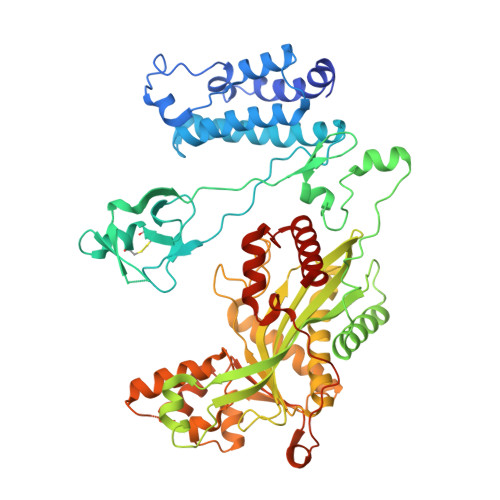Structure of p300 in complex with acyl-CoA variants.
Kaczmarska, Z., Ortega, E., Goudarzi, A., Huang, H., Kim, S., Marquez, J.A., Zhao, Y., Khochbin, S., Panne, D.(2017) Nat Chem Biol 13: 21-29
- PubMed: 27820805
- DOI: https://doi.org/10.1038/nchembio.2217
- Primary Citation of Related Structures:
5LKT, 5LKU, 5LKX, 5LKZ - PubMed Abstract:
Histone acetylation plays an important role in transcriptional activation. Histones are also modified by chemically diverse acylations that are frequently deposited by p300, a transcriptional coactivator that uses a number of different acyl-CoA cofactors. Here we report that while p300 is a robust acetylase, its activity gets weaker with increasing acyl-CoA chain length. Crystal structures of p300 in complex with propionyl-, crotonyl-, or butyryl-CoA show that the aliphatic portions of these cofactors are bound in the lysine substrate-binding tunnel in a conformation that is incompatible with substrate transfer. Lysine substrate binding is predicted to remodel the acyl-CoA ligands into a conformation compatible with acyl-chain transfer. This remodeling requires that the aliphatic portion of acyl-CoA be accommodated in a hydrophobic pocket in the enzymes active site. The size of the pocket and its aliphatic nature exclude long-chain and charged acyl-CoA variants, presumably explaining the cofactor preference for p300.
Organizational Affiliation:
European Molecular Biology Laboratory, Grenoble, France.
















